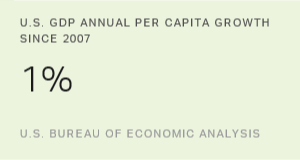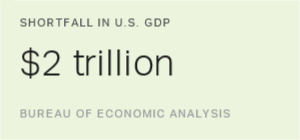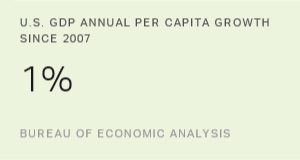Story Highlights
- Economies are seeing little or no economic growth
- Three trends could converge to create a builders' movement
- People with ideas can move from being consumers to builders
This is the third article in a three-part series.
If cities around the world want to revive their stagnant economies, they'll need to find and develop new entrepreneurs -- known more broadly as "builders."
Business and city leaders everywhere can't find these builders soon enough. Little or no economic growth in advanced economies -- coupled with the deceleration of economic growth in developing economies -- does not bode well for the global economy. U.S. gross domestic product growth per capita has been stuck at 1% annually since 2007, according to the U.S. Bureau of Economic Analysis.
As noted in the first article in this series, three trends could converge to inspire the emergence of builders in cities and societies:
- the scarcity of traditional good-paying jobs
- individuals' desire to live meaningful, productive lives that engage them
- the availability of technology that lowers the barriers to entry into entrepreneurship
This article focuses on the third trend: the availability of technology that lowers the barriers to entry into entrepreneurship.
Technology Has Lowered Barriers to Entry Into Entrepreneurship
Historically, entrepreneurship was limited to the privileged few who had the necessary resources or had relationships with those who had resources. Apart from a few who made it big, most entrepreneurs never made it to the market.
With the advent of information technology, the path from ideation to creation to entrepreneurship has shortened. The internet has made invention, production and entrepreneurship accessible to anyone. For instance, tools and technologies including "do it yourself" web-design programs, 3-D printers, laser cutters and open-source software have enabled millions of people to design and manufacture their own products.
These same people can easily step into entrepreneurship by raising funds online to mass-produce their creations. Then, with the click of a mouse, they can sell their products and services to millions of potential customers. These are the very people business and city leaders need to find, attract and develop.
Powerful digital platforms such as Alibaba and Amazon can serve as launching pads for thousands of builders. Startups today can seek out global investors, suppliers and customers with little upfront investment. Regular people with passion, ambition and drive have the potential to disrupt an entire industry.
This trend of ordinary people with ideas becoming builders instead of consumers is already affecting some sectors of the economy. Some groups estimate the market for 3-D printed products and services will grow from $2.3 billion in 2012 to $8.6 billion by 2020. Etsy, a web marketplace for arts and crafts or handmade goods, has 1.7 million active sellers and 40 million products for sale worldwide, generating more than $2 billion annually in gross merchandise sales.
Etsy is part of the larger "maker movement": a bottom-up, new-age manufacturing economy that is said to be pumping nearly $30 billion into the U.S. economy every year. Customers are geographically dispersed around the world -- something technology and social media have made possible. These are real businesses that aspire to grow and make a difference in people's lives.
Lawrence Katz of Harvard University and Alan Krueger of Princeton University characterize Etsy sellers as "alternative workers" -- nontraditional, flexible workers and freelancers building and selling things around the globe.
Technology has lowered the barriers to entry into self-employment for those who value independence over security and flexibility over a traditional workday. The income from these ventures ensures earnings for builders in times of declining job security.
Millions of these new builders are the new producers in our economy -- exploiting entrepreneurial opportunities, building products and services, and finding customers for their products. Instead of being content to remain consumers, they have become the builders of the new economy -- and job creators in cities and societies around the world.
In an economy in which steady, well-paying jobs have dramatically declined, builders can bolster the middle class through entrepreneurism. It is imperative that business and city leaders find and develop these builders.



